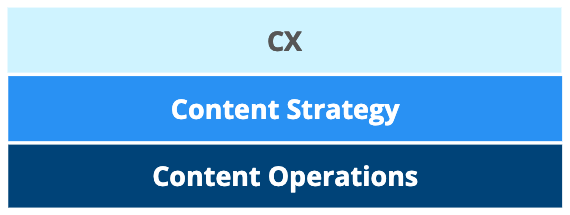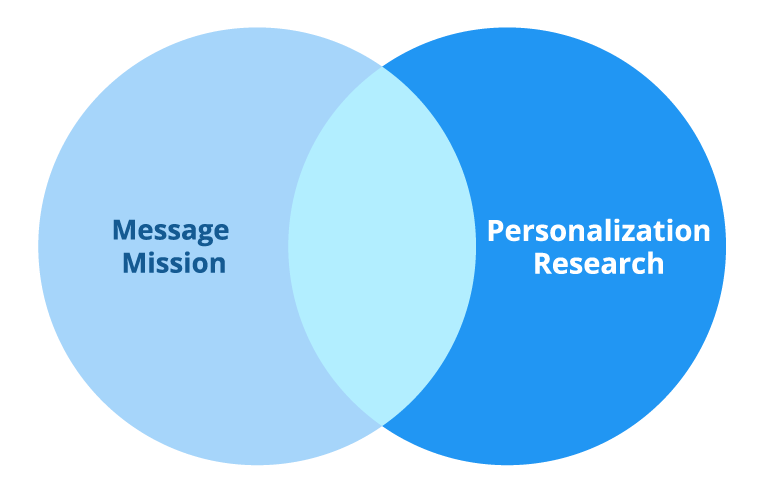A content strategy is the north star of marketing—or at least, it should be. Too often, however, content strategies are no more than polished documents that are labored over, circulated, and then left to gather dust in a forgotten folder.
In a high-performing marketing organization, content strategy forms the critical link between the work marketers do every day and the way in which customers experience the brand. But building an enterprise strategy that actually gets buy-in from internal stakeholders at all levels is no easy task. It takes hard work, and ultimately, compromise, to do it right.
Confronting the CX Gap
Today’s marketers aren’t just tasked with maximizing likes, shares, and other random acts of engagement. Instead, we’re now responsible for orchestrating outstanding customer experiences across every stage of each customer journey.
But that probably isn’t news to you.
And as much as we’re well aware of our new imperative, delivering frictionless and personalized customer journeys has turned out to be another story entirely.
According to Gartner, 81% of marketing leaders believe that within two years their companies will mostly or completely compete on the basis of the customer experience they provide. Makes sense. But here’s the kicker: Only 22% of those same leaders say their CX efforts exceed customer expectations.
What we’re left with is a gap—a gap separating where marketers are, and where they need to be.
The Three Layers of Marketing’s Work
Unpacking this disconnect is understanding the layers that make up our work, and where exactly things start to fall apart.

Customer Experience
Our ultimate goal is to build exceptional customer experiences for increasingly self-directed, highly demanding consumers. We must be prepared for members of target buying groups to strike out on their own paths, and we must be confident that they will encounter a logical and compelling set of interactions that build—and accelerate—their sales process.
Content Strategy
Your customer-centric strategy should place key stakeholders at the center of the discussion and tailor full journeys—not just individual interactions—that delight, inform, and advance them at every touchpoint. How exactly do we do this?
Content Operations
Here’s where strategy meets execution: Your content operation must handle the complex task of translating strategy into execution. How do you ensure your strategy is actually expressed across the plethora of customer touchpoints that span buying stages, product lines, regions, channels, and more? The tactical level of content is all about how teams work together to create these crucial, full-funnel experiences.
Many of us painstakingly create comprehensive and powerful strategies, then leave execution to often haphazard or siloed activities. I believe this has been the most underserved area as we build content plans, which is why I’ve made it the primary subject of a new white paper, One Voice: Winning with Content in the CX Era.
The Challenges of Developing a Content Strategy
Inherent in the building of any enterprise-ready content strategy are tensions—between conflicting priorities, between internal silos, and between strategic levels within the organization. I tend to bucket them into two distinct-yet-related categories:
1. Intellectual Tension
The first level of tension is expressed by the two seemingly contradictory priorities of the day: consistency and personalization.

On one hand, it’s crucial that prospects and customers receive a consistent message, no matter the source. On the other, today’s empowered customer expects content tailored precisely for who they are, where they are in the buying process, and their particular pain points.
How much should we prioritize one side of the spectrum over the other? The precise point which you consider ideal usually depends on where you sit on the proverbial corporate ladder. Those at the higher reaches of an organization often fear that carefully designed strategic messaging will be lost among the myriad places content is produced and distributed. Those closer to the actual creation, however, can chafe at top-down directives, feeling that strictly limited messaging fails to speak effectively to their audiences.
2. Interpersonal Tension
The second level of tension is the same found in the politics of any office.
With so many teams involved in the planning, creation, distribution, and analysis of content, it’s tempting to retreat into silos, each working to maximize engagement within their own domains rather than considering together how they might create (or destroy) a cohesive experience.
The Approach: (Venn) Diagram It!
The proper balance between these polarizing priorities will be different for every organization. But in each, stakeholders across departments will need to put in the work to collaborate and strike the unique balance best suited for the desired outcomes and the organization.
With 81% of business buyers ranking the experience a company provides as higher in importance than the company’s actual product or service, we have to find the intersection that allows creators to apply corporate messaging to the specific needs of each region, persona, and more. Strategies have to resolve this tension by encompassing both a global message and a structure that allows teams across the enterprise to effectively personalize it across every context.

How Can We Bring Strategies to Life?
Of course, having a well-designed strategy is only the tip of the iceberg for marketers. After all, what good is a strategy if it isn’t actually implemented across the vast expanse of content?
Taking sustained, measurable action on strategies isn’t possible until we embrace a new internal operating model designed to unite revenue teams across the organization to speak in one voice and drive revenue. It won’t be a quick fix, to be sure, but you also won’t have to figure it out alone: Such a model—content operations—has already been tried and tested. And I’ve written about it at length in a brand new white paper: One Voice: Winning with Content in the CX Era. I’d love to hear what you think.


